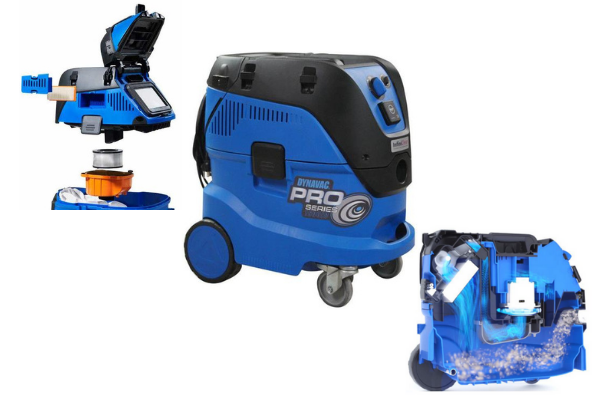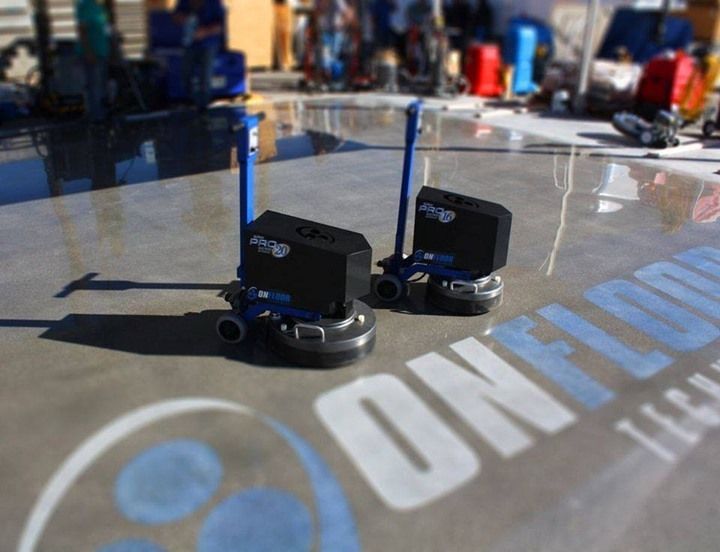Residential and commercial flooring is an inherently dusty job.
With grinders, sanders, and polishers tearing up and polishing concrete or wooden floors, there’s a ton of it. Even if your machines are fitted with dust collectors like skirts or vacuums, some dust is bound to escape.
Do you have a big flooring job coming up? Perhaps you’re booked to work on refinishing or laying down flooring in a warehouse, manufacturing complex, or brand new apartment building.
One way to ensure worker safety (got to keep those lungs healthy), lower the risk of fire or explosions, maintain productivity, and keep quality high is to rent or invest in a portable dust collector.
If you’re considering a portable dust collector system for your workplace or worksite, read on. We’ll explain what these vital machines do and what their benefits are.
What Is a Portable Dust Collector?
Dust collectors are machines that use various mechanisms to remove dust, chemicals, gas, and particulates from the air in a given area. This might be a laboratory, factory, smelter, recycling center, mine, or enclosed construction worksite like a basement.
They suck in dirty air, pass it through a filtration system to clean it, and then discharge the clean air into the environment or recycle it back inside the building. Most systems have measuring devices that allow operators to see how well the machine is cleaning the air.
Dust collectors have become indispensable for industries that produce harmful dust or other matter that pollutes the air. This is because they need to meet government guidelines and mandates to protect the health of workers, the public, and the planet.
Types of Dust Collectors
If you’re considering renting or investing in a dust collector for your business, it helps to understand the different types. You need to know your jet dust collector from your vacuum dust collector and understand why accessories like dust collector bags are essential.
Shaker Systems
Shaker systems are typically used in smelters, mines, foundries, and steel mills–anywhere related to the collection or processing of ore. The particles enter the baghouse of this dust collector and are captured by the filters. The filters are continuously vibrating, shaking the particles into a collection bin.
Typically, these collectors are either compartmentalized or run on a stopped airflow system, with the former being the most efficient option because it can run non-stop. These are an excellent choice for any environment where cleaning the filter with compressed isn’t an option.
Cyclone Systems
Think of how a tornado or hurricane works, and you’ll be some way to understanding the processes that lie behind the operation of cyclone dust collection systems.
The cyclone effect is generated in a chamber using centrifugal force. Dirty air enters the chamber and is purified as the heavier particles are pushed to the walls. From there, they travel down the chamber’s walls and into a collection area.
This type of dust collector is typically used in places that produce light particulates, such as paper and grain millers, carpenters and woodworkers, and shot blasting professionals.
Baghouse Systems
If you’ve ever used a portable dust collector while working with a large industrial floor grinder and polisher, it probably ran on a baghouse system.
Baghouse systems are the most popular dust collection machines on the market. They’re efficient, easy to maintain, and can operate continuously. A fan creates a vacuum that sucks particles through a filter fitted inside a bag. Then, the particles are either shaken from the filter or removed with a blast of air.
This type of dust collector can filter a wide range of particle sizes, so it’s suitable for various industries. Businesses that use a baghouse system include recycling plants, powder coating services, construction sites, and cement producers.
Wet Scrubber Systems
Wet scrubber dust collection systems use water to process the captured particles.
There are two blades inside the machine that moves in the opposite direction from one another. One pulls in the dirty air, and the other sprays it with water.
The damp dust particles then get pushed into a collection area.
Other Systems
There are various other types of specialized collector systems. Though these are less commonly used, they have specific applications or are more efficient than other systems.
These include:
- Spark arrestors
- Cartridge systems
- Downdraft tables
- Self-contained internal return systems
If you’re working in the commercial flooring and construction industries, you’re unlikely to need any of these specialist collectors. Most portable dust collectors suitable for your needs will operate on a baghouse system.

Why You Should Use a Portable Dust Collector
On commercial jobs, sometimes even the best quality, most powerful vacuum just won’t cut it when it comes to reducing dust to healthy levels. That’s when it’s time to consider investing in something more powerful–like a portable dust collector.
Workplace Safety
Dust in the workplace isn’t just an irritant or nuisance.
Particles like silica, flour, wood, and asbestos pose a serious health risk to anyone who breathes them in. Workplaces can use a portable dust collector to clean the air, discharging it outside, or recycling back into the facility.
Dust collectors also help to reduce physical injuries. Some types of airborne dust (known as combustible dust) can lead to fires or even explosions. It’s essential they’re not left to float around unmitigated.
Not only will this keep your workers safe, but you’ll also comply with necessary government guidelines and regulations, such as those issued by OSHA, NIOSH, and the CDC.
Portability
Of course, one of the best benefits of a portable dust collector is that you can move them anywhere. And that means you can move them not just between job sites but also within a job site.
Their portability makes them easy to transport to a service center when they need repair or maintenance and easy to store when the machine isn’t in use.
Flexibility
Whether you’re grinding a concrete floor or sanding a wooden floor, a portable dust control system is the solution.
They come in a range of sizes and types of dust collector bags, so they can take up as much or as little space on the job site as you need. This means they’re able to be squeezed into a tight corner or even placed outside an area (using an extractor fan).
You can also get collectors with a range of functions or system types in one machine. You can move from one kind of job to the next without having to hire a different collector.
Help You Get the Job Done
Dust from concrete resurfacing or other flooring jobs can collect on equipment, making it work harder, reducing its lifespan, or even causing it to break down. Dust collectors preserve the function of your machine, reducing the need for repairs or servicing.
All that time and money you’ve invested in training won’t be wasted if your workers are happy with their healthy, dust-free workplace. Research has shown that employees who work in a clean environment are more satisfied, productive, and likely to stay with you.

Portable Dust Collectors: Things to Consider
Industrial vacuums are great for controlling dust on small or even mid-sized commercial jobs. But how do you know when this size of vacuum will do or whether you need a portable dust collector instead?
Size
Basically, the rule of thumb when it comes to portable dust collectors is that you can’t go too big. A larger collector still works as well for small jobs, like grinding concrete floors, as it does for larger projects. However, the opposite is definitely not true when it comes to small machines.
Mounting
There are two main types of mounts for a shop dust collector: a skid or a trailer. What you choose to use will depend on the kind of project you’re working on.
If your worksite has road access, go with a trailer-mounted system. But if there’s no road access, you’ll need to choose a skid-mounted unit that can be lifted into place using a crane.
Filter Medium
Dust collector filters come as either a pulse-jet filter or pleated cartridge. As with the unit mounting, the dust collector filter material you fit your machine with depends on the type of particulate you need to manage.
Filter mediums include:
- Polyester filters
- Cellulose blend
- Fiberglass
- High-efficiency felt
- Polypropylene (PP)
- Nylon
- Acrylic
- Cotton
Before you invest in filters, be sure to check the rating requirements you need for the job, such as HEPA or MERV.

Right Tool for the Right Job
Portable dust collectors are essential to improving the working conditions for employers and ensuring the flooring work you do is completed on schedule and of the highest quality. In flooring work, you’re typically moving from site to site, and this is where a portable dust collector comes in handy. You might choose to hire different-sized machines for different jobs, or you could invest in a collector for your business.
Of course, when it comes to smaller flooring jobs, a portable dust collector is likely overkill. Industrial vacuums or grinders fitted with dust collection technology will do a better job. If you’re interested in exploring these options with Onfloor Technologies, request a demo from us today.

1 Comment